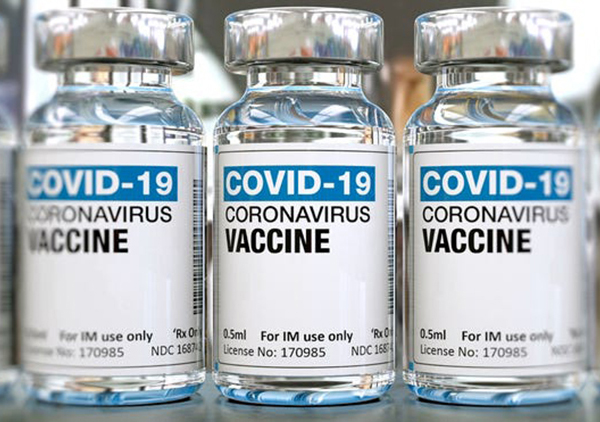
The arrival of COVID-19 vaccines stirs up mixed feelings. Many doctors and scientists are hailing this a new chapter in the fight toward ending the pandemic. However, there are others who are distrustful of these measures and are inclined to mistrust science and the government. This article will provide a brief tutorial of COVID-vaccine terminology and help debunk some of the more dangerous myths surrounding the vaccine’s rollout. The goal is to make the reader a more educated consumer.
First, we will define some of the terms surrounding the introduction of these products. Then we will address some of the most common misconceptions surrounding COVID-19 vaccines.
Below are definitions of some of the terms surrounding the introduction of the COVID-19 vaccines:
OPERATION WARP SPEED refers to the effort to fast-track the development of COVID-19 vaccines. While it typically takes years to advance an idea into a marketable product that clears the FDA’s rigorous safety benchmarks, the path for the development of these vaccines was accelerated in order to save lives. The shortened timespan was a result of mass production of vaccines even while final stages of clinical trials were being conducted, rather than proceeding step-wise and waiting for completion of all trial stages. These vaccines came to market faster than normal not because clinical safety was compromised, but because steps that normally occur in series (i.e. first: complete the clinical trials, second: manufacture large quantities of the vaccine) happened simultaneously. The initial reports were so encouraging that vaccine production was bankrolled on a mass scale so that as soon as the completed trials were deemed successful, vials could be shipped out to waiting recipients.
EMERGENCY USE AUTHORIZATION (EUA) is a mechanism that is employed to help facilitate the rollout of health-related products (like medical countermeasures including vaccines) before they are FDA-approved as long as certain criteria are met. These include the existence of a public health emergency and the absence of any available alternatives. Additionally, the product must satisfy minimum safety and efficacy standards.
MESSENGER RNA (mRNA) is responsible for delivering instructions to protein-building parts of a cell regarding what proteins to manufacture. This process is called transcription, and can be manipulated depending on what the mRNA is programmed to instruct. DNA uses genetic code, a series of nucleotides in a particular order, that is carried by mRNA to translate genetic instructions for protein production. This essentially serves as the recipe for creating a given protein. When used in a vaccine, the mRNA delivers this genetic code directly to the cell. We’ve all seen illustrations of what the Coronavirus germ looks like under the microscope, with its crown-like collection of spikes projecting from the surface of the cell. The COVID-19 mRNA vaccine instructs the recipient’s body to manufacture this spike protein, which then prompts the immune system to create a corresponding antibody against the spike. The process offers all of the benefits of homegrown immunity without the risks of actually getting a COVID-19 infection. While the use of mRNA in vaccines is relatively new, the technology behind it has been studied for years. BioNTech and other laboratories have been exploring its use to fight HIV/AIDS, seasonal Influenza, Zika virus, Rabies, CMV, and even cancer (by way of triggering specific immune cells). Once the genetic code for the COVID-19 virus was published in February of 2020, the next logical step was to employ mRNA technology to fight COVID. Other vaccines, like the Flu vaccine, utilize a different mechanism to prime the immune system, often employing a weakened version of the microbe to prompt an antibody response. These vaccines use fertilized chicken eggs to incubate the virus, and once mature, it is chemically rendered non-infectious and delivered to the body in vaccine form. This inactivated version of the germ stimulates the body to generate an antibody response. One major benefit of mRNA-based vaccines is that their production time is faster than the necessary wait time involved in germinating a microbe in an egg vessel.
PFIZER-BIONTECH and MODERNA: These two companies joined forces to make newer mRNA technology available to the masses. BioNTech, a German laboratory, and Pfizer, a US-based business, received most of their funding for COVID-19 vaccine development from the German government. Their vaccines are mRNA-based and are approved for use in patients at least 16 years of age (for Pfizer’s, and 18 years of age for Moderna’s). These vaccines are injected into the muscle in two doses, administered three weeks (for Pfizer-BioNTech) or four weeks (for Moderna) apart. Their safety in younger children and pregnant women is presumed but has not yet been demonstrated formally. The CDC (Centers for Disease Control) and ACOG (American College of Obstetricians and Gynecologists) endorse this vaccine’s safety in mothers who are breastfeeding.
Next, let’s address some of the most common misconceptions surrounding COVID-19 vaccines:
| MYTH | FACT | ||||||||||||||||||||||||
| COVID vaccines were rushed into production with untested technology | The mRNA technology behind the two earliest approved vaccines is not new, but the application is novel. Moderna’s mRNA vaccine trials involved at least 30,000 participants and Pfizer’s included 43,000 participants just for the third phase of study. The integrity of the scientific process was not compromised, and safety and efficacy were prioritized. | ||||||||||||||||||||||||
| COVID vaccines can give you a COVID infection | Because the mRNA only codes for a protein on the outside of the COVID-19 cell surface and includes no actual virusmaterial, its introduction to the body cannot cause COVID. | ||||||||||||||||||||||||
| mRNA vaccines can change your DNA or genetic makeup | Not only does mRNA never enter the cell nucleus, it is a fragile material (hence the ultra-cold storage requirements for the vaccine) that degrades as soon as it delivers its instructions. It cannot alter a person’s DNA in the short-term or long-term. | ||||||||||||||||||||||||
| Patients who had and recovered from COVID don’t need the vaccine | The scientific community doesn’t yet know how long naturally-acquired antibodies last, so vaccine-derived immunity may still play a role in protecting patients in the long-term. | ||||||||||||||||||||||||
| Getting a COVID vaccine will implant you with a tracking microchip | This unfortunate conspiracy theory is categorically false. These vaccines (and in fact all vaccines) do not contain microchips or RFID trackers. | ||||||||||||||||||||||||
| COVID-19 vaccines cause Lupus or infertility | There is no evidence that suggests the side effect profile includes any long-term consequences like auto-immune disease or infertility. The majority of vaccine side effects (the most common of which were fatigue, headache, or soreness/redness at the injection site) manifest by the 8-week mark after injection. Trial participants will continue to be followed for several years to ensure transparency. | ||||||||||||||||||||||||
| The COVID vaccine will be mandatory | There is currently insufficient supply of vaccine to ensure a two-dose regimen to every US citizen. Tiered delivery by ranked risk category will allow those whose employment puts them in the most peril to be among the first to get vaccinated. Other high-risk groups, like the elderly and those with underlying health conditions, will be next. After that, assuming adequate stock, the vaccine should be available to anyone who chooses to receive it. | ||||||||||||||||||||||||
| COVID vaccines can make you sick | Some vaccine recipients reported symptoms of pain at the injection site, fatigue, headache, or joint/muscle pain. While they overlap with COVID symptoms, these complaints are a result of the body’s immune response. mRNA vaccines are considered “reactogenic,” meaning they prompt a robust immune reaction, which can manifest as the above clinical symptoms. These may be worse in younger patients or with the second dose of the vaccine, as the immune response is typically more vigorous in those situations. | ||||||||||||||||||||||||
| The special storage requirements will make these vaccines almost impossible to distribute | Pfizer’s preparation requires -94°F, or “ultra cold” storage, which needs fresh dry ice supplementation every 5 days to maintain that frigid temperature. Moderna’s version can be shipped at -4°F, the temperature in a standard freezer. After thawing, the Pfizer vaccine is viable for 5 days and Moderna’s is usable for 30 days. | ||||||||||||||||||||||||
| COVID vaccines provide long-term immunity | Duration of immunity from vaccination is yet undetermined. While a two-dose series may be enough to provide a lifetime of immunity, we may also need an annual COVID shot, much like our current Flu recommendations. Researchers will continue to follow vaccine study participants to assess longevity of antibody response. | ||||||||||||||||||||||||
| The COVID vaccine will quickly make the pandemic go away | Vaccinating a critical number of people will allow us to achieve “herd immunity,” a situation wherein enough people have antibodies to the virus and it can no longer find a viable human host. While the threshold for herd immunity in COVID is unknown, for Measles it occurs when 95% of the population demonstrate immunity. A September study out of Stanford University estimated 9% of Americans have had COVID so far, so without vaccinating, it will take a lot more tragedy to achieve the levels needed to claim herd immunity and protect the masses. Until then, we need to maintain masking, physical distancing, and meticulous hand-washing to succeed in keeping safe.
|
The introduction of vaccines to fight COVID-19 is a shining example of what can happen when science and innovation unite toward a common goal. The kind of open sharing of information and collaboration between companies and countries has been exceptional, and is a testament to the singular goal we all share: ending the COVID-19 pandemic. When it comes to educating the public, the loudest voices aren’t always the most accurate, so we must be vigilant when we decide which sources to trust. Just as vaccines brought about the eradication of Smallpox in 1972 and Polio in 1979, the hope is that an extensive vaccine campaign can bring about the end of COVID as well. Patience plays a role as well, as we wait for proper scientific studies to confirm the safety of these vaccines in younger children, and for production of the vaccine to meet the demands of the general public. COVID-19 vaccines have tremendous potential to deter suffering and save lives, and hasten the resolution of this devastating pandemic.
For additional information and resources, visit our COVID-19 Resource Center.
Written by Dr. Carly Wilbur, UH Pediatrician and psi Medical Director.



Leave A Comment
You must be <a href="https://www.psi-solutions.org/wp-login.php?redirect_to=https%3A%2F%2Fwww.psi-solutions.org%2Fcovid-19-vaccine-education%2F">logged in</a> to post a comment.